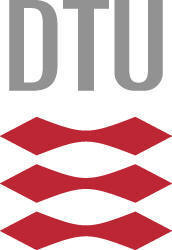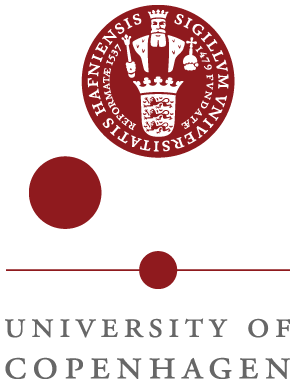Material for the participants are found here
Invited lecturers
Jan Modersitzki
Jan Modersitzki provides an introduction to image registration and the design of efficient and stable state-of-the-art algorithms. The conceptual backbone is a powerful variational framework. This framework not only enables a deep understanding and analysis of fundamental concepts but also the synthesis and design of new problem specific algorithms. Hands-on examples are based on FAIR - Flexible Algorithms for Image Registration, SIAM, 2009 by Jan Modersitzki and the publicly available FAIR toolbox. This toolbox enables easy access to even complex schemes. The tutorial enables participants to use the software, explore existing registration techniques, and to design and develop new solutions for individual problems. The tutorial also covers the integration of new features like mass-preservation and hyperelasticity.
The tutorial consists of three lectures and two accompanying lab exercises covering the following topics:
- Introduction and motivation
- The why and how on the way from a discrete to a continuous world
- Distance measures and parametric image registration approaches
- Regularization and non-parametric image registration approaches
- Constraints and Outlook
Johannes Lotz, M.Sc. from the Fraunhofer MEVIS Project Group Image Registration, Lübeck, Germany , is tutor for the exercises.
A detailed description of the tutorial is available here including suggested reading material.
Marc Modat
Medical image registration has been an active topic of research for over two decades. Multiple methods have been proposed to address non-rigid registration. These methods can be classified into non-parametric and parametric. This session will focus on parametric registration and more specifically on the free-form deformation framework proposed by Rueckert et al. in 1999. This method consists, in a nutshell, of a deformation model parametrised by a regular lattice of control point which combined with a cubic B-Spline kernel enable a smooth transformation of the input images. An entropy-based measure of similarity, the normalised mutual information, is used. It enables to perform mono- and multi-modal registrations. During this session we will also discuss some of the further developments that have been added to the free-form deformation scheme since its initial publication in 1999.
Slides for the lecture,
slides and framework for the exercise.
Sebastien Ourselin
The first lectures include state-of-the-art applications of image registration in clinical practice hereunder an overview of the standard methods and challenges. The major challenges will be outlined these are mainly due to non-rigid motion, differences of the image modalities and image acquisitions, and real-time processing to obtaining on-the-fly registration for intra-operation and surgery.
Guest Talks
The Morphon Method for Image Registration - Principles and Applications
Looking for an image registration method that is easy to implement, optimize, and which may even work? The Morphon method may be the method for you. Drawing from signal processing theory, the algorithm is based solely on filtering operations and uses a separation of the measured signal, and the certainty about that measurement to reach a robust way of matching structure between the source and target images. In this talk, I will introduce the key algorithmic building blocks. The presentation is aimed at people who, like me, have a weak background in signal processing but who may know a thing or two about image analysis. A couple of applications on medical images will serve to demonstrate what can be done.
Commercialization of medical image analysis
The motivation for most researchers in medical image analysis is to develop technology that can benefit the patients, but in practice very few methods have made it all the way to clinical use. This talk will describe the main obstacles on this road to utility, and use the BoneXpert product for illustration. BoneXpert is a pure-software image analysis CE marked medical device, which automatically determines the bone age of a child from an X-ray of the hand. It is based on active appearance models (which has some similarity to non-rigid registration) and other machine learning principles. The product has been installed as an integral part of PACS at 25 hospitals across Europe (including nearby Lund and Trelleborg). Parents typically request a bone age assessment of their child in order to predict the adult height.
There is plenty of general material on the website www.BoneXpert.com. An in-depth description can be found here: Thodberg HH, Kreiborg S, Juul A, Pedersen KD: The BoneXpert Method for Automated Determination of Skeletal Maturity, IEEE Trans Medical Imaging, Vol. 28 (1), pp 52-66 (2009), abstract. (Slides for the participants are available here or a pdf for personal use can be obtained by sending an email to thodberg(a)visiana.com)
Local lecturers
Automated brain segmentation - registration as a nuisance
Computational methods that can reliably delineate structures of interest from magnetic resonance (MR) images of the brain have a wide array of potential applications, including assisting in clinical diagnosis and therapy monitoring, as well as facilitating basic neuroscientific and clinical research. Developing fully-automated analysis techniques is technically difficult, however, because of the complex anatomy of the brain and its variability across individuals, as well as ambiguities in the images resulting from scanner limitations and the underlying imaging physics. In this lecture I will discuss an approach that aims to overcome these difficulties via Bayesian modeling. In particular, I will consider a framework in which computational models of the imaging process are combined with sophisticated models of the expected location and shape of the various brain structures under investigation. Within this framework, registration appears as a mere nuisance - something we are not actually interested in but that needs to be dealt with somehow during the computations. I will show recent results indicating that explicitly computing optimal registrations, as is commonly done, yields sub-optimal segmentation results compared to more advanced techniques.
This talk introduces Fast Adaptive Tessellation and Hyper-Elastic Registration (a.k.a. FATHER) which is a framework for image registration. FATHER is a simple image registration technique which applies a local affine deformation model and a hyper-elastic deformation prior. The talk will give a simple and brief introduction to hyper-elasticity for engineers (but not French mathematicians), motivate the use of the local affine deformation model and an explore how to build in adaptive tessellation in to the registration, and finally relate FATHER to the Active Appearance Model by introducing the Elastic Appearance Model. The remainder of the talk will focus showing examples and presenting a simple MATLAB implementation. Framework
Suggested reading material:
- The virtual knife, Mads Fogtmann Hansen
- Elastic Appearance Models, Mads Fogtmann Hansen, Jens Fagertun, Rasmus Larsen.
Henrik Aanęs,
Anders Dahl, and
Kim Steenstrup Pedersen
In this presentation, we will start out by briefly outlining feature based image registration and its uses. We will then proceed by briefly describing how we have built an experimental setup around an industrial robot arm, and used this to generate large amounts of image data with ground truth, cf. http://roboimagedata.imm.dtu.dk/. This has been used for an in depth evaluation of methods for point feature matching through image pairs, which we will outline our main findings of.
Suggested reading material:
- Winder, Hua and Brown (2009): Picking the best daisy
- Tuytelaars, T. and Mikolajczyk, K. (2008): Local invariant feature detectors: a survey
- Dahl, Pedersen and Aanęs (2011): Finding the Best Feature Detector-Descriptor Combination
Infinitesimal Parametrizations and Metrics on Diffeomorphisms
Infinitesimal approaches to registration prevent folding by representing the entire deformation as a path of infinitesimal steps. With the LDDMM (Large Deformation Diffeomorphic Metric Mapping) registration framework, the space of deformations that underlies registration is equipped with Lie group and metric structures. The benefits are the ability to measure distances between points, lines, surfaces, distributions, and images; explicit control of the smoothness enforced in the registration; and possibility of performing well-founded statistics on the registration results. The talk will give an overview of the infinitesimal approach and how the metric structure relates to registration. In addition, the kernel bundle multi-scale extension and representation using higher order kernels will be discussed.
Suggested reading material:
- L. Younes, F. Arrate, M. I. Miller: Evolutions equations in computational anatomy
- L. Younes: Shapes and Diffeomorphisms
- S. Sommer, M. Nielsen, X. Pennec: Sparsity and Scale: Compact Representations of Deformation for Diffeomorphic Registration
- S. Sommer, M. Nielsen, S. Darkner, X. Pennec: Higher Order Kernels and Locally Affine LDDMM Registration
Introduction Workshop
An introduction to image registration will be given by Professor Rasmus Larsen , DTU-Informatics and Professor Mads Nielsen, DIKU. Rasmus Larsen will give a talk on parametrization using B-splines, slides and Matlab examples are found here. Mads Nielsen will explain how the folding problem can be solved by regularization, slides. Regularization is a way to incorporate prior knowledge and one constraint could be that the shape cannot fold.

